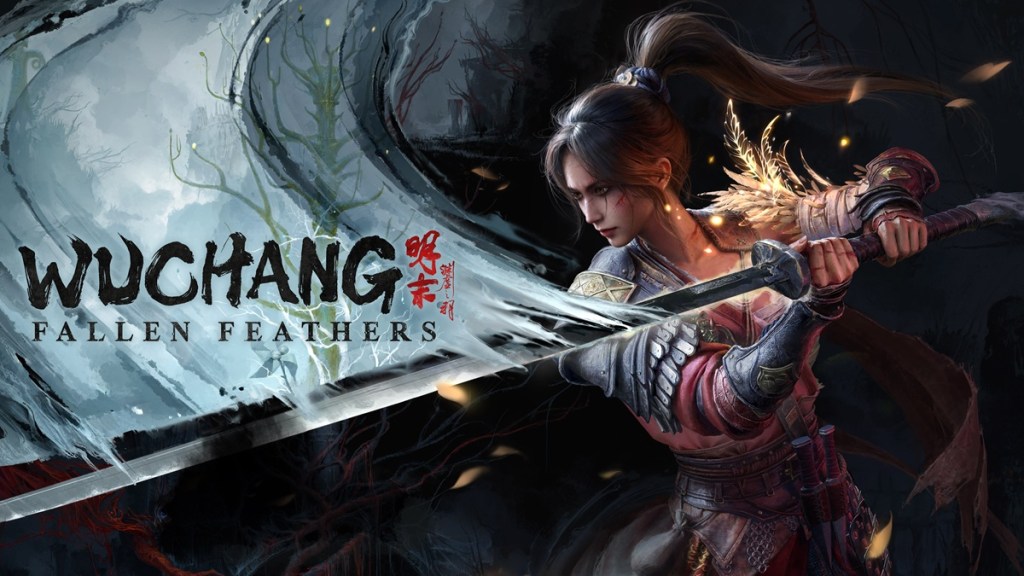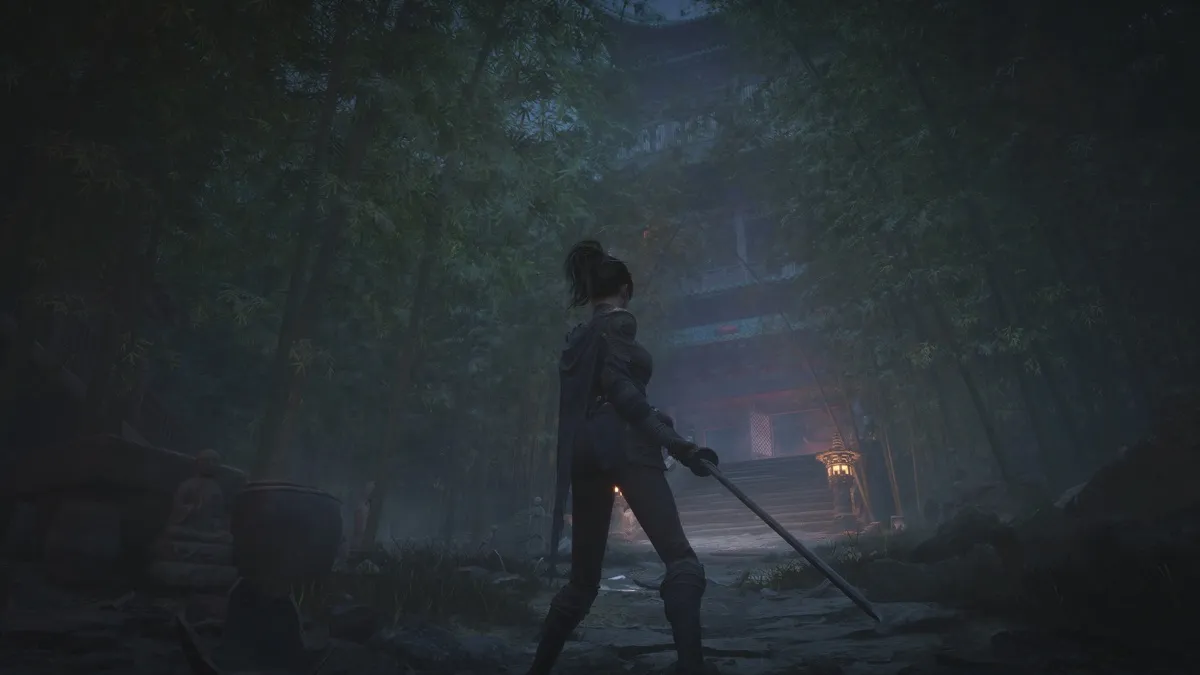
As someone who has only paid the briefest of attention to Soulslike games that aren’t crafted by the folks at FromSoftware, Wuchang: Fallen Feathers didn’t pop up on my radar in the months leading up to its release. In fact, if I hadn’t been invited to go hands-on with it at this year’s Summer Game Fest, I likely wouldn’t have ever known it was ready for primetime. It’s been close to two months since my first demo with the game, and now, having sunk hours and hours into the full version, my feelings are… mixed, to say the least. On one hand, Wuchang’s core mechanics and richly realized world feel distinctly unique and will certainly find a home with diehard fans of the genre. On the other hand, the game’s held back by a number of niggling issues which, when taken as a whole, keep Wuchang from reaching the upper echelon of Soulslikes.
We might as well get one thing out of the way — Wuchang: Fallen Feathers features a colorful cast of characters, a slew of interesting locales to explore, and a story that’s decidedly less cryptic and open to interpretation/speculation. With that being said, I could not tell you a single thing about any of its plot details. I skipped through most of the game’s dialogue and didn’t bother to commit NPC names to memory (partly due to time crunch), which only served to confuse me when a character would disappear for a dozen or so hours, only to pop up again and continue right where they’d left off. Cue the “explaining to my mom” meme.

What did grab my attention (and never really let go) was Wuchang’s combat system, which often feels more high-stakes than your typical Soulslike. I have no idea what kind of antics protagonist Bai Wuchang gets into, but for a 17th-century pirate, she has a knack for wielding weapons of all types. While it’s theoretically possible to put together a build that’s centered around magic, Wuchang: Fallen Feathers is very much a melee-focused title, with each weapon class having its distinct characteristics. Axes, while weighty and slow to use, are quite good at stunlocking and breaking an enemy’s stance, and they also offer up the ability to block/guard early on. Conversely, one-handed swords offer little in the way of doling out a lot of physical damage, but they can greatly boost your magic capabilities.
There are a lot of different ways to approach the wide variety of enemies and bosses that Wuchang throws your way, and what ties everything together is the <checks notes> Impetus Repository; that is, the game’s skill tree (there are more than a few curiously-named items and mechanics in Wuchang; you quickly learn to roll with the punches). Not unlike Dark Souls or Elden Ring, you’ll spend resources collected from killing enemies (namely, Red Mercury, which can be converted to Red Mercury Essence) to unlock new skills and level up. Unlike the aforementioned FromSoftware titles, Wuchang gives players the option to respec at a moment’s notice (and without any penalty/cost), which paves the way for experimenting with different playstyles and builds.
I probably ended up resetting the skill tree a half dozen times in the game’s opening chapters, all to gain a better understanding of Wuchang’s other key mechanic: Skyborn Might, a consumable resource that not only lets you cast spells, but lets you unleash powerful attacks and counterattacks that easily outclass your standard repertoire of moves. There are a few different ways to build up Skyborn Might — such as dodging attacks at the last second or countering an enemy’s weapon with a well-timed swing of your own, known as clashing — but there are dozens and dozens of other ways to gain and spend Skyborn Might, many of which are directly tied to skill tree upgrades.
It’s that right there — the focus on customizability and variety — that helps Wuchang set itself apart from its contemporaries, but for every two forward steps that Wuchang takes, it’s dragged down by an often unrelated, but very persistent, issue. Take the skill tree and leveling up, as an example. It’s a pretty straightforward process to convert Red Essence into Red Mercury Essence (which is sort of like converting Runes or Souls into “Levels,” for your FromSoft fans), but if you want to use a precise number of consumable items to boost your Red Essence count to get a specific number of Red Mercury Essence, you’ll have to navigate in and out of multiple sub-menus. In fact, for whatever reason, you’ll often find yourself having to bounce between menus over and over whenever you rest at a shrine (Wuchang’s equivalent to Bonfires and Sites of Grace), and the criminally small font size and over-reliance on menu text can easily make for a headache-inducing experience, even for my above-average eyesight. Outside of menu navigation, I also ran into numerous performance problems and HDR issues on my PS5 Pro, and while these issues are being worked on, it’s a shame they are present to begin with.
It’s enough to drive one mad, and that’s entirely separate from Wuchang’s Madness mechanic. While much of the game’s world resets upon resting at a shrine or upon dying, Bai Wuchang’s madness level persists across deaths, and is directly impacted by how you go about playing. Dying in combat or killing human enemies raises your madness level, and you’ll dish out (and receive) more damage as your madness reaches 100%. Increased madness levels also tie directly into some unlockable skill tree upgrades, and you’ll also drop more Red Mercury upon death. Should you die and respawn with 100% madness, you’ll eventually come across the Inner Demon, a powerful enemy that can drop valuable loot upon dying, but it’ll also claim all your Red Essence should it defeat you. This certainly sounds menacing on paper, for anyone who has any experience with other Soulsborne titles, it’s not difficult to manage your Red Essence ahead of time, and it didn’t take long for me to fall into the practice of topping up my Red Essence and converting it into skill tree upgrades ahead of maxing out the madness meter. After all, there’s no risk in losing precious resources if you spend them ahead of time.
In a vacuum, Wuchang: Fallen Feathers would stand as a resounding success, especially when you consider that it was helmed by a relatively unknown developer. But, when compared to its genre contemporaries, it fails to reach the same impressive highs of the games it clearly holds reverence for.
-
Skyborn Might feels novel, and brings a much welcome emphasis on timing and dodging attacks
-
Combat feels varied, with plenty of room for experimentation
-
Offers a unique take on an often under-represented aspect of Chinese culture and history
-
Sharp difficulty spikes will drive some players away
-
Menu bloat and UI readability issues are present throughout
-
Suffers from poor HDR implementation and performance hitches
The post Wuchang: Fallen Feathers Review: New PS5 Soulslike Is a Journey to the East appeared first on PlayStation LifeStyle.
